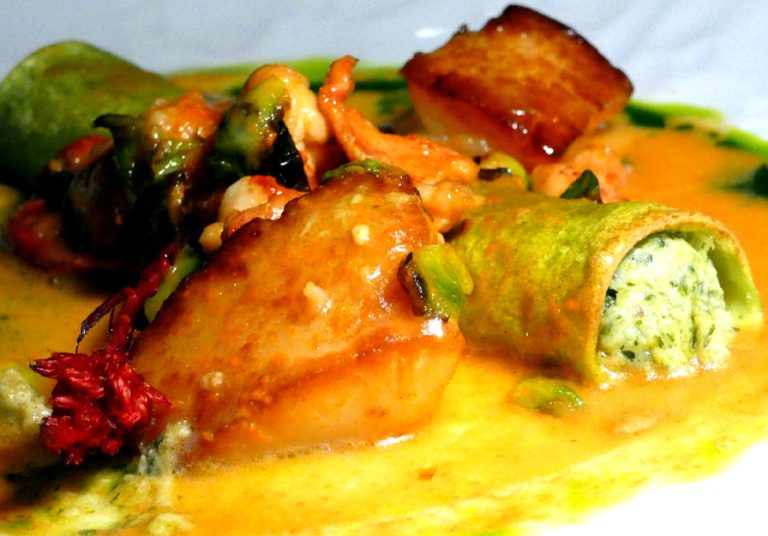Published with permission from LuxuryWeb.com
Cuisine in Turkey traces its origins back to the 6th century CE when the Turkish people — who were nomads in Central Asia — relied primarily on a diet of meat, dairy, and a few gathered fruits and vegetables from their campsites.
During the 11th century, Turkoman nomads settled in Anatolia, also known as the Land to the East, alongside Greeks, Armenians, Azerbaijanis, and other ethnic groups in the region. Meanwhile, the majority of Seljuk Turks settled in Palestine, the Red Sea shore of the Arabian Peninsula, Persia, Isfahan, and the area near modern Afghanistan and Pakistan.
In 1453, Sultan Mehmet II’s conquest of Constantinople, which is now known as Istanbul, marked the end of the Byzantine Empire and the beginning of the Turkish (Ottoman) Empire as a prominent Muslim power in the region. The Ottomans expanded their empire, conquering the Balkans and parts of Eastern Europe, reaching as far west as the outskirts of Vienna and as far south as the Mediterranean shores of North Africa.

Historical background
The Ottoman Turks placed great emphasis on luxurious and extravagant dining. The kitchens of Topkapi, the Sultan’s palace, were situated under ten domes. By the mid-16th century, these kitchens employed over 1,200 people and served up to 8,000 individuals each day. The kitchen staff was organized with specialist cooks, each assigned a specific task under the supervision of a master cook, similar to a modern chef de cuisine.
Success
You are now signed up for our newsletter
Success
Check your email to complete sign up
This system of organization predated Escoffier’s kitchen setup at the Savoy in London and laid the foundation for how modern restaurant kitchens operate today, with individuals specializing in specific tasks such as salad making, soup preparation, grilling, frying, poaching, sauce making, and dessert preparation.
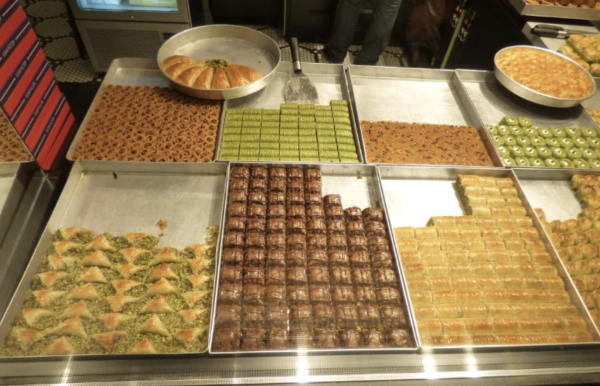
Turkish cuisine has been influenced by various culinary traditions from the lands surrounding the Ottoman Empire, as well as by travelers along the Silk Road. Istanbul served as the starting and ending point for one of the Silk Road’s branches. When Mustapha Kemal, also known as Atatürk or the father of Turkey, established the modern Turkish Republic, the local cuisine began to incorporate influences from even more distant ethnic groups. However, the classic dishes that I grew up with still hold a special place in the kitchens of the average Turkish family.
Turkish cuisine is incredibly diverse, healthy, and regional, although it remains relatively lesser-known compared to other global cuisines. In the Eastern Mediterranean, it is still highly revered today, much like it was in the past.
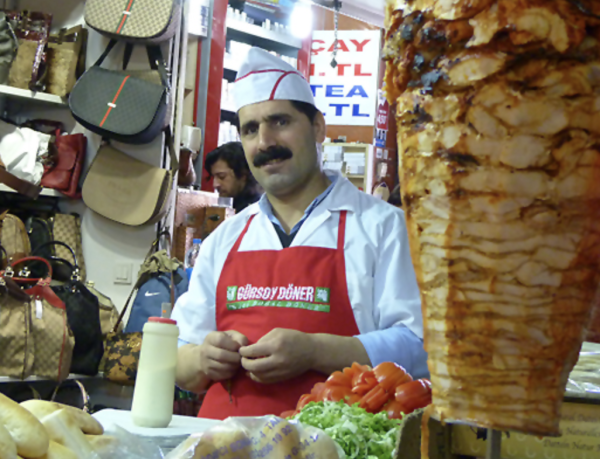
Scrumptious dishes
Let’s begin with my favorite breakfast dish, Menemen.
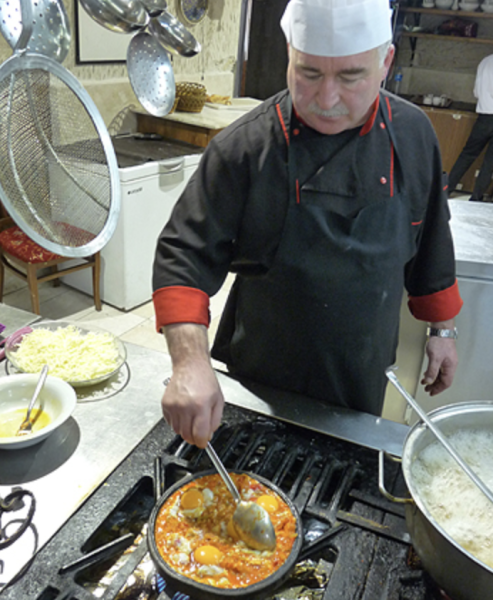
Menemen is a dish originating from Anatolia, prepared with fresh eggs, tomatoes, onions, and a combination of spicy green peppers and red bell peppers (capsicum). During my visit to a hotel in Ürgüp, Cappadocia in 2011, the chef would make Menemen every morning. They cooked down sweet skinless tomatoes, thinly sliced red and white onions, rounds of green scallions, and red pepper flakes in a mixture of butter and olive oil until the vegetables turned almost into a paste.
Then, eggs were cracked on top, and the sauce with the vegetables was placed under a broiler to set the eggs. Sometimes, crumbled white cheese similar to feta or ricotta salad was mixed in with the vegetables.
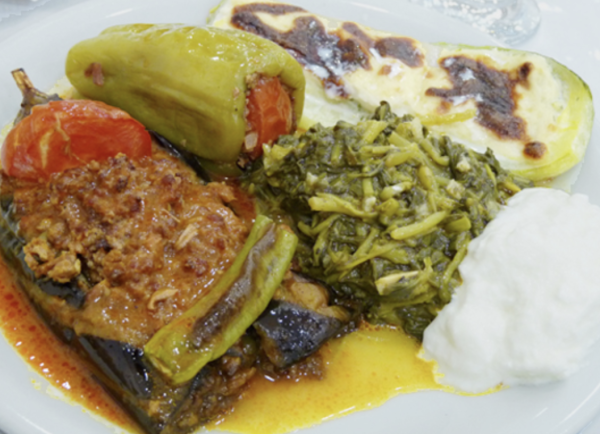
This dish can also be enjoyed at night, but with a slightly different preparation. The eggs are beaten, and the cooked vegetables are folded in, using less tomato and more onion and hot pepper mix. The dish is then cooked as a frittata and sprinkled with dried oregano.
Street food is ubiquitous in Turkey, a tradition that dates back to the days when nomads couldn’t predict where or when their next meal would be. In major cities, street vendors offer a variety of street foods such as simit (thin round bread covered with toasted sesame or poppy seeds), roasted chestnuts in winter, roasted corn in summer and autumn, fresh shelled almonds or walnuts kept in ice-cold water, dondurma (ice cream in a cone), toffee-on-a-stick, and numerous other delicacies. Even pickles (turşu) are sold from carts.

There are storefronts that specialize in “to go” options, including ice cream, baklava or kadayif pastries, doner kebab or shish kebab with salad in pita bread, ayran (a beverage made from diluted yogurt), kokoreç (charcoal-grilled and highly seasoned lamb offal wrapped with intestine on a skewer), and many other snacks. In Turkey, no matter where you are, you’ll never go hungry.
Restaurants in Turkey often specialize in particular types of dishes and are typically categorized based on the food they serve. Kebapçı, restaurants that specialize in grilled beef, lamb, or goat meat, can be found everywhere. In Istanbul, along the Bosporus seashores or under the Galata Bridge, there are Balıkçı restaurants offering fish and seafood prepared in countless variations.
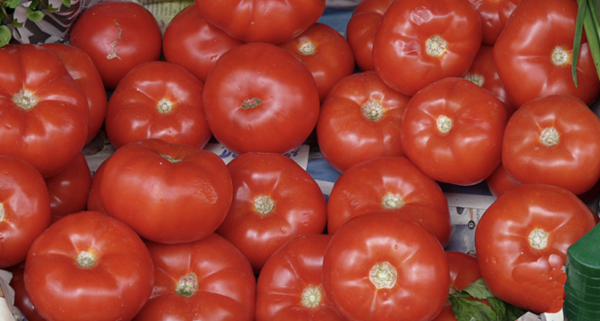
There are also restaurants that predominantly serve cooked vegetables or oil-poached vegetable dishes. Many of these vegetables are stuffed with a mixture of rice, finely chopped onion, garlic, parsley or dill, tomato juice, and spices. Tomatoes, eggplants, zucchinis, bell peppers, vine or cabbage leaves are all stuffed with the rice mixture and then baked in the oven.
Mussels and large squid or cuttlefish are also stuffed with the rice and aromatic mixture and oven-baked.
Mouth-watering stews and sautéed veggies
In some cases, the vegetables are stuffed with a different mixture of ground meat, rice, shredded onion, and dill. They are cooked in a combination of water and olive oil until all the liquid is absorbed, leaving only the olive oil with a bit of vegetable juice. The remaining liquid is then used to make an egg-lemon sauce in which the vegetables are bathed.
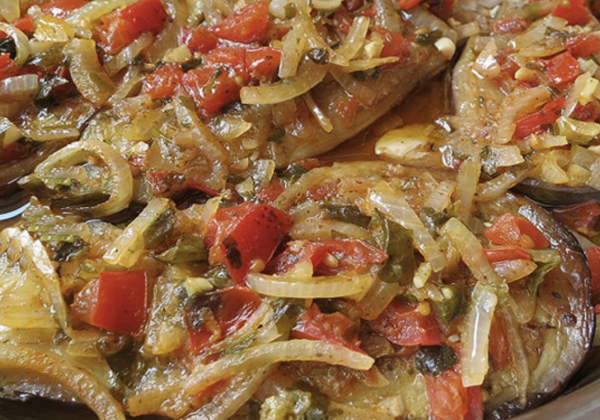
One particular vegetable dish that stands out for me is Imam Bayildi, which translates to “The Priest Fainted.” It tastes even better on the second or third day after being baked, although it’s quite challenging to resist devouring it immediately.
Another vegetable stew that I love is Türlü or Briam, the Turkish version of ratatouille. Made during the summer in a clay pot, it consists of fresh cubed vegetables, grated tomatoes, onions, and aromatic spices. This dish can delight both vegetarians and omnivores, either as a main dish or as a side.
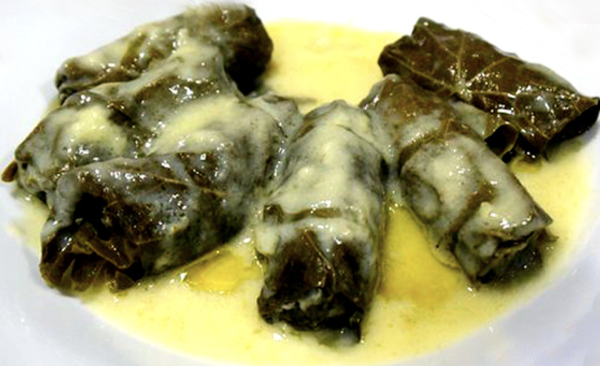
Among the delicious Ottoman specialties, Hünkar Beğendi, or the Sultan’s Delight, stands out. It features chunks of lamb or beef in a gently herbal tomato sauce seasoned with sweet paprika and served over fire-roasted, skinless eggplant mixed with béchamel. The resulting dish is truly fit for royalty.
The origins of this dish are shrouded in mystery, with an apocryphal story suggesting it resulted from an affair between Empress Eugenie, wife of Napoleon III, and Sultan Abdulaziz. However, since the meat closely resembles traditional goulash, I believe it to be a Central European transplant modified with the available meat and aromatics found in Turkish kitchens. Regardless, it remains a beloved specialty found in many restaurants in larger cities, much to the delight of traditionalists.
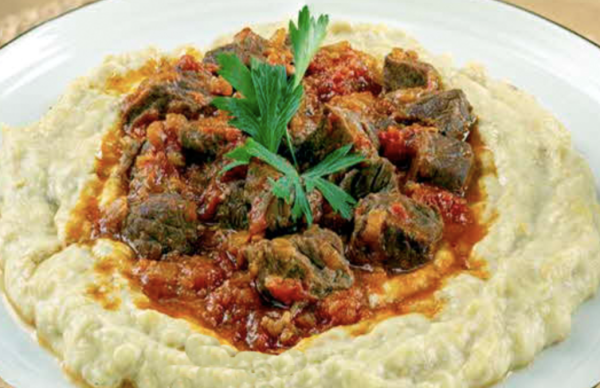
As I mentioned, whether you find yourself in a city, village, or wandering through the countryside in Turkey, you’ll never go hungry. The culinary landscape offers a myriad of flavors, from street food to specialized restaurants, catering to diverse tastes and preferences.
Turkish cuisine is a treasure trove of flavors, combining the influences of different cultures and regions. It reflects the rich history and vibrant culinary heritage of the Turkish people. Whether you savor a traditional breakfast dish like Menemen, indulge in street food delights, or explore the depths of Ottoman specialties, the diverse and delectable Turkish cuisine is sure to satisfy every palate.

So, if you have the opportunity to experience Turkish cuisine firsthand, I highly recommend embarking on a culinary adventure that will leave you with a deep appreciation for the flavors, traditions, and hospitality that define Turkish dining.
Visit LuxuryWeb.com to see the original article, and more.










